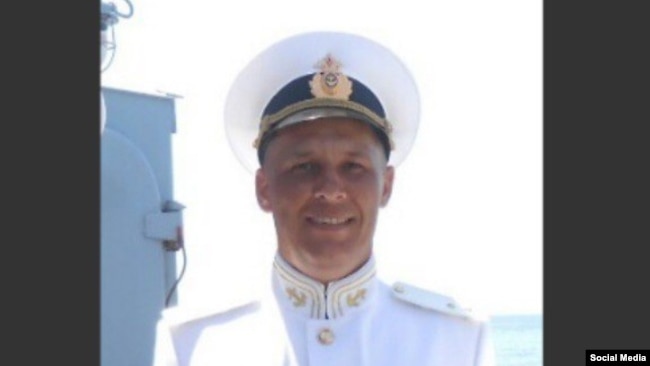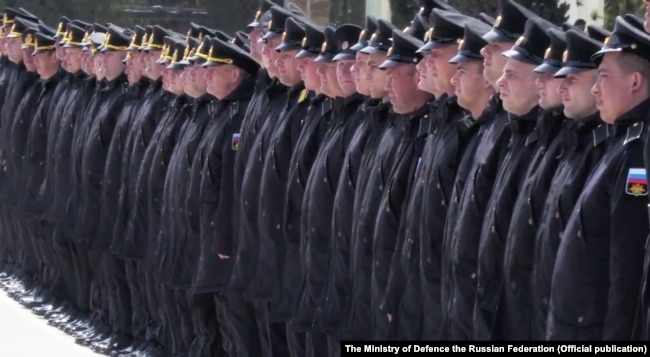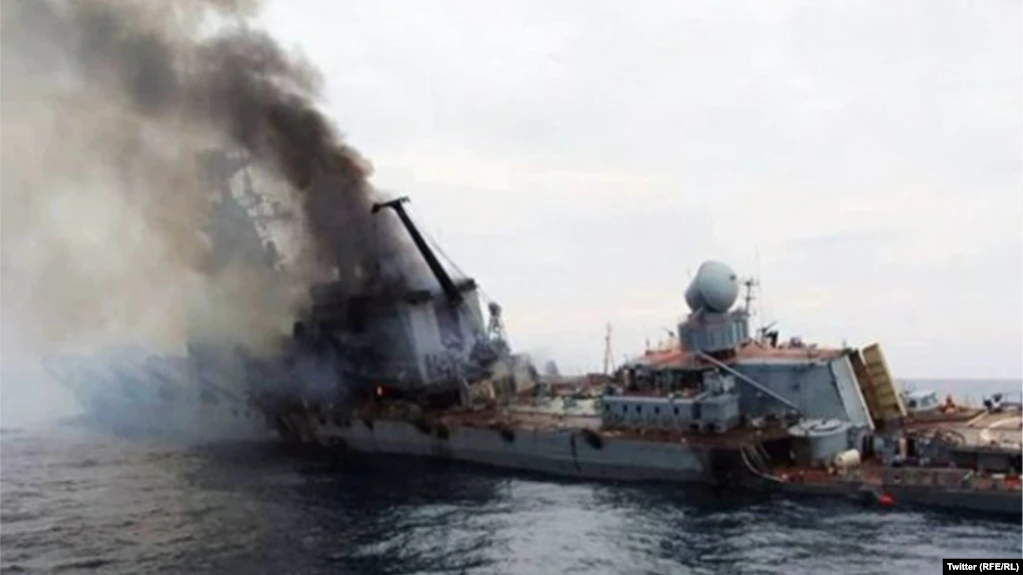Dmitry Shkrebets knows the true fate of his 20-year-old son, even if Russia won’t yet tell him.
Yegor Shkrebets was a cook aboard the guided-missile cruiser Moskva in the Black Sea when it was reportedly struck by two Ukrainian Neptune missiles on April 13 while far from shore. Moscow attributed the disaster to an ammunition explosion.
The flagship of Russia’s Black Sea Fleet, the Moskva, which had about 500 crew members on board, caught fire and sank in stormy weather the following day, before reaching port.
The elder Shkrebets said naval officers contacted him to say his son was not dead but rather included among the “missing,” a statement he seemed to find incredulous considering the circumstances.

“Guys, missing on the high seas?!!!” he wrote in a post on his VKontakte social media page.
Five days after the loss of the Moskva — the largest naval ship to sink in 40 years — the fate of the crew is still shrouded in mystery.
Russia has not made any official comment about if — or how many — sailors died.
In a statement shortly after the incident, Russia stated it had “completely” evacuated the crew. However, in subsequent statements the reference to “completely” was missing.
Shkrebets is one of at least four sailors considered missing or dead by Russia, based on social media posts by family members.
Varvara Vakhrusheva posted on social media that her husband, Ivan Vakhrushev, was killed in the incident. She said she had received a call from Russian Navy officials on the afternoon of April 14.
The commander in chief of the Russian Navy, Admiral Nikolai Yevmenov, met with the crew of the Moskva in the port of Sevastopol on April 16.

A video of the meeting posted to social media showed two rows of sailors totaling about 100 people. Whether the remaining 400 crew members are either injured or dead is unclear.
Wreaths laid at a memorial in Sevastopol and posted on social media were dedicated “to the ship and crew,” an indirect confirmation of deaths aboard the Moskva.
The elder Shkrebets went to a hospital in Sevastopol with his wife to look for their son’s body. They saw about 200 young men, injured with burns, but did not find their son, Irina Shkrebetsa said.
“We looked at every burned child. I can’t tell you how hard it is, but I didn’t find mine. There were only 200 people there, and there were more than 500 on the cruiser. Where are the others?” Shkrebetsa said in an interview with The Insider.
Moscow has an extensive history of trying to cover up catastrophes and any resulting casualties, be it during war or peacetime.
In August 2000, a torpedo on board the nuclear submarine Kursk exploded, killing most of its crew members and sending the wreck, along with 23 survivors, plunging to the seafloor. The tragedy claimed the lives of all 118 sailors aboard.

The blast was picked up on seismographs across Europe, but the Russian Navy made no public acknowledgement of the catastrophe.
President Vladimir Putin, then just over three months into his first Kremlin term, continued vacationing on the Black Sea and made no statement about the Kursk for more than a week, until his return to Moscow.
During the wars in Chechnya in the 1990s and early 2000s, Moscow kept a tight lid on the number of soldiers and civilians killed. Likewise with the current war in Ukraine. Russia has officially stated that fewer than 2,000 soldiers have died, despite mounting evidence that the number is much greater.

The United States and Western allies earlier this month put the number of Russian soldiers killed at 10,000.
Among the dead are Russian conscripts, even though Moscow initially said they were not serving in the war. After admitting that some were accidentally sent to Ukraine, Russian officials said the remaining conscripts had been called home.
However, Yegor Shkrebets is at least one of two conscripts “missing” aboard the Moskva. The younger Shkrebets, a resident of Yalta in Crimea, was conscripted in July.
Uliana Tarasova announced on social media that her son, Mark Tarasov, a sailor aboard the Moskva, is “missing.” Tarasov was conscripted in December.
Later that month, Tarasov posted a photo of himself in his sailor’s uniform on his Instagram account, according to the Agenstvo news agency.
“See you in a year,” he wrote.






